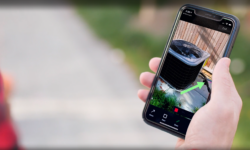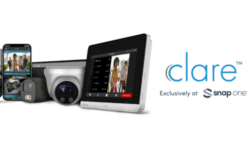How to Profit on Lighting Controls and Motorized Shades
A recent study shows why security dealers and integrators are well-positioned to offer residential and commercial clients lighting controls and motorized shades.

(Image: David Patterson)
The lighting control space has long been a staple for consumer electronics (CE) integration companies, and it’s a sector ripe for installing security contractors to create new revenue streams as well.
Consider: a recent study conducted by SSI sister publication CE Pro confirms how pervasive lighting controls are, with 91% of responding residential integrators reporting a project the past 12 months that had controls, fixtures and/or motorized shades.
Likewise, 14% of respondents to the 2021 CE Pro Lighting and Shade Deep Dive Study said lighting controls were included in every project they installed. The data is also strong on the commercial side, despite the downturn in the commercial space driven by the pandemic the past 18+ months.
In the information, charts and captions ahead, you’ll discover how this data points the way to security dealer/integrator portfolio expansion opportunities.
Follow the Trends
Among the three subsystems in the lighting area, the installation of motorized shades is the most lucrative for integrators, and the revenues and profits just keep on rolling (pun intended).
Indeed, dealers predict a 13% growth rate in hardwired installations and a 9% growth in battery-powered shade projects next year. According to CE Pro’s study, the median price for a motorized shade installation (equipment + labor) is $13,152 with an average of seven shades per project.
That equates to $1,878 per shade — more than double the per-device rates for both lighting control and lighting fixtures. There are several identifiable trends in the study. For example, exposed roller shades continue to grow in popularity.
According to integrators, 28% of their projects now include at least one exposed roller shade. Hidden shades inside soffits are still the most commonly installed types of shades, with 37% of projects including a shade tucked away in a cove.
Meanwhile, integrators are also expanding the scope of their motorized window covering installations to include areas like skylights (17% of shade projects) and glass doors (22% of shade projects).
Even outdoor shading has a solid amount of deployment, with 19% of projects that have shades including an outdoor element, integrators report. That can be a patio shade, or it could be exterior window shades, which are much more commonly seen in Europe than in the U.S.
A recent report from the U.S. Census Bureau showed that 61% of all new homes built in 2020 had backyard patios — a record high rate. That means even more opportunities to install outdoor shades. Dealers predict their exterior shade installation business will surge 7% this year.
One application for motorized shades that enables integrators to show their skills is floor-to-ceiling windows. According to the study, 30% of all shade projects over the past 12 months included at least one floor-to-ceiling shade.
Blackout shades are common in master suites and home theater to try to block out the ambient light. Dealers report installing blackouts on one-third of their shade projects. Lastly, motorization is not exclusive to shades. More than one out of every four projects (26%) include the motorization of drapes or curtains.
Pair Home Theater and Motorized Shades
As noted earlier, home theaters and master suites are ideal rooms for blackouts, so it’s not surprising that those two spaces are among the most common applications. On projects that have shades, 45% of the time integrators are installing them in the master suite — the No. 1 location.
Formal living rooms (41% of shade projects), great room/family room/den (40% of projects) are also common areas. Home theaters get shades on one in three projects, as do dining rooms. Interestingly, home offices have become a hot area for window treatments.
Dealers report 32% of their shading projects include a home office application. That is probably being driven by the work-from-home trend that was escalated by the pandemic. Home offices that were routinely used at night are now being used during the day, requiring the control of the natural light so the homeowner doesn’t get washed out in the Zoom camera image.
Lastly, kitchens (30% of projects) and bedrooms (29%) are somewhat common applications. It was not too long ago that the thought of an integrator installing battery-powered shades was blasphemous. But that technology has evolved that enable integrators to install battery-powered shades and control them wirelessly with great efficiency.
According to the study, 19% of all projects included battery-powered shades during the past year. And integrators predict these installations will increase 9% next year. Still, one out of every five integrators report they did not do a single installation using a battery-powered shade last year.
Shades have also become a key element to showcase in showrooms. Among integrators that have showrooms (which is 39% of all dealers), half of them report having a vignette where they demo a motorized window treatment.

Lighting Market Fast Facts
26 Median number of residential projects installed by integrators over the past 12 months with lighting control, lighting fixtures or motorized shades
47% Percentage of all residential installations over the past 12 months that included lighting controls, lighting fixtures or motorized shades
3 Median number of commercial projects installed by integrators over the past 12 months with lighting control, lighting fixtures or motorized shades
26.5% Percentage of all commercial installations over the past 12 months that included lighting controls, lighting fixtures or motorized shades
91.5% Percentage of integrators who installed at least one residential project over the past year that included lighting controls, lighting fixtures or motorized shades
74.6% Percentage of integrators who installed at least one commercial project over the past year that included lighting controls, lighting fixtures or motorized shades
14% Percentage of integrators who installed lighting controls, lighting fixtures or motorized shades in 100% of their residential projects over the past year
If you enjoyed this article and want to receive more valuable industry content like this, click here to sign up for our FREE digital newsletters!

Security Is Our Business, Too
For professionals who recommend, buy and install all types of electronic security equipment, a free subscription to Commercial Integrator + Security Sales & Integration is like having a consultant on call. You’ll find an ideal balance of technology and business coverage, with installation tips and techniques for products and updates on how to add to your bottom line.
A FREE subscription to the top resource for security and integration industry will prove to be invaluable.














